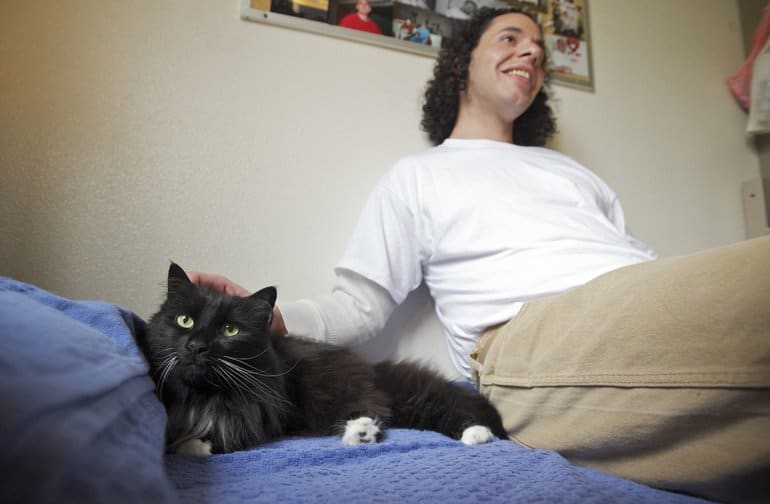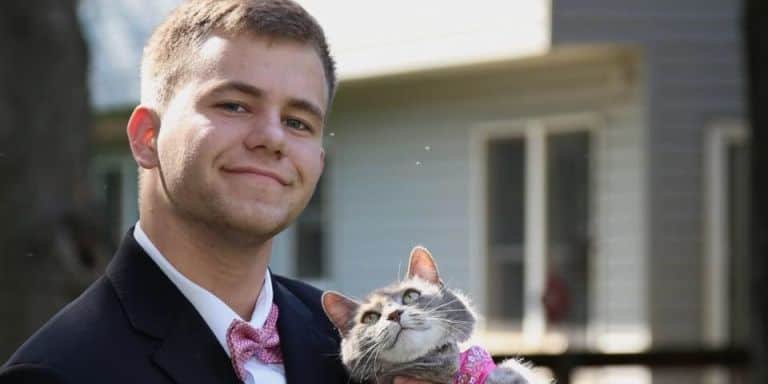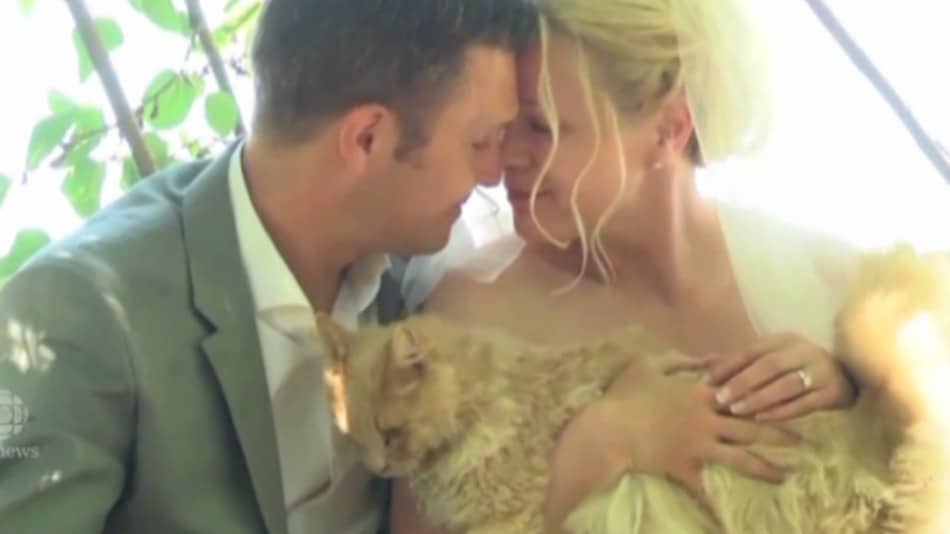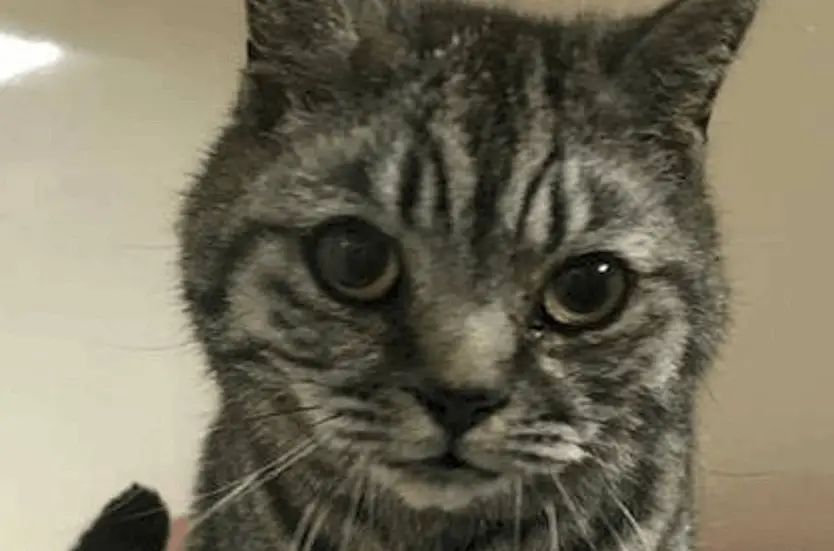Ever noticed that sagging, loose belly flap on your cat and wondered what on Earth it is? Is it a secret snack stash, a sign of too much weight (or weight loss), or something to be concerned about?
Whether you call it a jelly belly, saggy swaggy, the wobbleblob, mudflaps, giblets, or a flabdomen — that’s your cat’s primordial pouch!

The primordial pouch is that extra bit of loose skin and fat on a cat’s belly, located just in front of their hind legs. This flap may jiggle when they walk or run. Imagine it as your cat’s very own kangaroo pouch, but instead of carrying joeys, it’s filled with… well, nothing much. Unlike a chipmunk’s cheek pouches, which store food, the primordial pouch isn’t a snack stash. It’s just a part of their anatomy that has both intrigued and amused cat parents for ages.
What isn’t a primordial pouch?
Is it for fat storage?
Contrary to popular belief, the primordial pouch isn’t just extra fat. While it may contribute to a cat’s overall adorableness, it’s not a sign that your feline friend is overweight. Even the fittest of cats can sport this distinctive feature.
Is it a belly button?
Nope, it’s not a belly button either. Cats, like most mammals, have belly buttons, but they are not as noticeable as this loose belly skin.
Is it a result of aging?
The primordial pouch is not an age-related phenomenon. All cats, from kittens to senior cats, can have this sagging skin. It’s a feature present in various cat breeds (yes, even big cats like tigers and lions!) that first presents around 6 months of age.
So, what is my cat’s belly flap?
This flap of loose skin is what scientists call a vestigial structure—a leftover from an earlier stage in evolution. Think of it as the feline equivalent of the human appendix.
Just as our appendix no longer serves a clear purpose but still sticks around, the primordial pouch is a vestige of evolutionary history. It’s a relic from a time when domestic cats’ wild ancestors roamed free and had different survival needs.
Possible Theories

There are a few theories about the primordial pouch’s purpose, both in ancestral cats and in modern domestic cats.
- Protection: The pouch might serve as a protective layer for a cat’s vital organs during fights or rough activities. While cats are known for their agility and quick reflexes, accidents can still happen. The pouch can help cushion any impact and prevent serious injuries to the cat’s internal organs.
- Flexibility: It could allow for greater flexibility, aiding in running, jumping, and escaping predators. The loose and stretchy skin allows them to move more freely while avoiding injury. This may also explain why some larger cat breeds have more prominent pouches compared to smaller breeds.
- Food Storage: In the wild, a cat’s belly flap might have been used to store extra food, especially after a large meal or as preparation for winter seasons when food may be scarce.
- Heat Regulation: The pouch is also theorized to have a thermoregulatory function. Cats are known to have a higher body temperature than humans, which means they need to regulate their temperature more efficiently. Being an area with less fur and closer to the skin, the belly flap allows for better heat exchange between the cat’s body and their environment.
While these theories are all plausible, remember, the primordial pouch might simply be a leftover trait from your cat’s wild ancestors, no longer serving a specific purpose today.
In the end, the primordial pouch remains one of the fascinating mysteries of our feline friends. It’s not a belly button, a snack stash, or a sign of aging—it’s a charming quirk passed down through generations of evolution. Whether you call it a flapjack or a jelly belly, there’s no denying that this loose belly flap adds to the endearing charm of our beloved cats.
So, next time you see your cat’s belly flap swaying from side to side, you’ll know it’s just another marvel of nature’s design.
The Catington Post is reader-supported. That means, if you make a purchase through links on our site, we may earn an affiliate commission. All images and names which are not the property of The Catington Post are the property of their respective owners.




